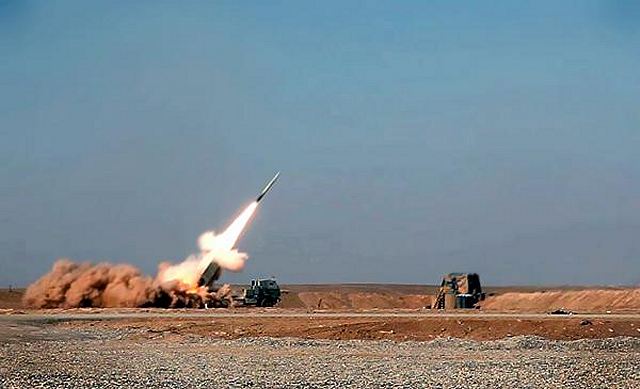The HIMARS rocket launcher of United States Army uses to fight enemy threats in Afghanistan 0603125
| a | |||
Military Defense Technology News - United States |
|||
| Tuesday, March 6, 2012, 10:50 AM | |||
| The HIMARS rocket launcher of United States Army uses to fight enemy threats in Afghanistan. | |||
The
artillery battery fired precision, GPS-guided rockets from a fast, and
accurate fire system called the HIMARS
High Mobility Artillery Rocket System, said 1st Lt. William
Prom, the fire direction officer with 3rd Platoon, Tango Battery, 5th
Battalion, 11th Marine Regiment. The High Mobility Artillery Rocket System
enables the Marines to take out enemies in Afghanistan within minutes
and strike within feet of a target, every time. (Source U.S. Marine Corps) |
|||
 A High-Mobility Artillery Rocket System (HIMARS) is launched from Forward Operating Base Delaram II in Afghanistan by U.S. Marines |
|||
| |
|||
There
was enough explosive material to construct hundreds of improvised explosive
devices. Marines from 2nd Battalion, 4th Marine Regiment lacked the power
to destroy the huge IED cache. They called for fire, and eight rockets
landed within seconds of being fired. According to the after action report
from the artillery platoon, all rounds impacted on target, the site was
destroyed, and there was no collateral damage. |
|||
Video
Live firing of United States Army HIMARS in Afghanistan |
|||
The
High Mobility Artillery Rocket System outranges traditional
artillery by up to three times, allowing smaller units to cover a larger
area. In previous deployments without HIMARS, it was common to send an
entire artillery battalion, composed of several smaller batteries, to
cover a large area of operations, said 1st. Lt. Tom V. Worthington, the
3rd Platoon commander with Tango Battery, 5th Bn., 11th Marines. With
HIMARS, a single battery is able to cover the entire battle space for
the partnered forces in Helmand province. “It's a big game changer,” said Staff Sgt. James D. Sanders, the 3rd Platoon sergeant with Tango Battery, 5th Bn., 11th Marines. “It can take out targets unthinkable by traditional artillery.” One HIMARS rocket can destroy a target which previously required four rounds, added Sanders, a 26-year-old native of Wichita, Kan. It has allowed the artillery element to support more units and more operations than before. “Knowing that I can support the Marines on the ground through thick and thin, through firefights, through indirect fire, through IED emplacers... knowing that we're saving lives is a good feeling,” said Alhmedi. “It's what we're meant to do.” |
|||


























